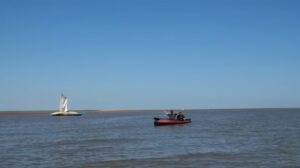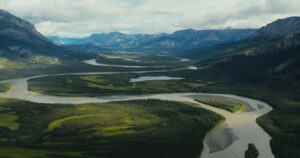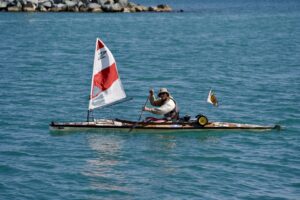Early in the 20th century, Labrador was a nearly uncharted wilderness in northeastern Canada. Few dared to confront it. Larger than Germany, it was one of the last wildernesses in North America. But Mina Hubbard defied the odds, traveled it safely and competently, and proved everyone wrong.
Mina Hubbard (then Benson) grew up on a farm in Ontario. Some described her as a “small, frail woman” and quite “demure” — although her later combative personality showed she was neither frail nor demure. Her rural upbringing connected her to the land and gave her an appreciation for the natural world.
However, she became a schoolteacher, and then a nurse. This is how she met the love of her life, explorer Leonidas Hubbard. The two complemented each other well and shared a passion for adventure.
Background
Labrador had been partially mapped by A.P. Low, a pioneering Canadian geographer. The Geological Survey of Canada would not be what it is today if not for his work. Despite his many great achievements, his surveys of the Labrador interior held some inaccuracies.
In 1903, Leonidas Hubbard, then a writer with Outing magazine, set out to make a name for himself by exploring the mysterious interior of Labrador. He and two partners planned a canoe expedition up the Naskaupi River, near what is now Goose Bay, to Michikamau Lake to the George River in Quebec. The George River, it was known even then, flowed north into Ungava Bay.

Dillon Wallace and George Elson drag their canoe up the beginning of shallow, stony Susan Brook.
This exploration turned tragic for Hubbard and his team. After a grueling three months, full of poor decisions and ill-preparedness, Hubbard died of starvation. The other two, friend Dillon Wallace and half-Cree guide George Elson, barely survived.

Memorial plaque at the campsite in Labrador where Hubbard died. Dillon Wallace’s original lettering in white lead is underneath. Photo: Jerry Kobalenko
A major reason for Hubbard’s failure was the inaccuracy of Low’s map. Right from the outset, he made a deadly wrong turn. Instead of the broad Naskaupi, they found themselves on a small, miserable stream called Susan Brook.
When Mina received word that her husband had perished, it devastated her. She eventually blamed Dillon Wallace and came to abhor her late husband’s friend. He wrote a bestselling book called The Lure of the Labrador Wild about the ordeal. Mina felt that it tarnished Leonidas’s reputation by making him sound like an impractical dreamer.
Meanwhile, Wallace had fallen in love with wilderness travel himself, despite his harsh introduction. He resolved to properly re-do what Hubbard had attempted. Mina would have none of that. The heartbroken widow decided to take matters into her own hands to save her husband’s legacy. She enlisted the third member of the original team, George Elson, and secretly began planning to do the route herself, to complete what her husband had begun.
The press caught wind of the story and made it a race between the two. Earlier, news of Hubbard’s death had made the front page of The New York Times, and this unusual competition between the widow and the former partner stoked further interest.
Mina’s journey
Mina learned all she could about what her husband did wrong and came up with better plans. Despite her inexperience as an explorer, she learned ahead of time how to navigate and draw maps, and proved herself a capable leader. Besides her and George Elson, they bought three other Labrador locals to do the physical work. Initially, her companions worried about letting a woman lead, but she quickly earned their respect.

Leonidas Hubbard, July 1903. Photo: Dillon Wallace
The party left in two canoes from the town of Northwest River and successfully traveled up the Naskaupi River to Lake Michikamau to the George River. They finished at the Hudson Bay Company post at Ungava Bay, after 900 remarkably efficient and non-melodramatic kilometers.
Mina even managed to connect with the main indigenous group in the area, the elusive Innu of interior Labrador. She thoroughly documented the region’s lakes, rivers, tributaries, wildlife, and plants. She took photographs, drew maps in her notebook, and made keen observations. The expedition was a resounding success. Meanwhile, Wallace took a less efficient route and reached Ungava Bay several weeks after Mina. In the eyes of the public, she “won” the race.
Legacy
Thanks to Mina’s high-quality photography, accurate descriptions, and excellent maps, explorers who came after her had a clearer picture of the type of landscape with which they were dealing. Her maps, in particular, were used for many years, before modern charts drawn from air photos supplanted them.
After the expedition, Mina went on the lecture circuit, published papers, and wrote a book called A Woman’s Way Through Unknown Labrador.
She never did another expedition. Ultimately, hers was a memorial gesture to her fallen lover. Researcher Wendy Roy describes Mina’s expedition as “that of a 20th century Penelope whose Odysseus did not return from his voyage.”
She found love again and married a businessman, with whom she had three children. Her life ended abruptly in 1956 after a train ran her over at the age of 86.






